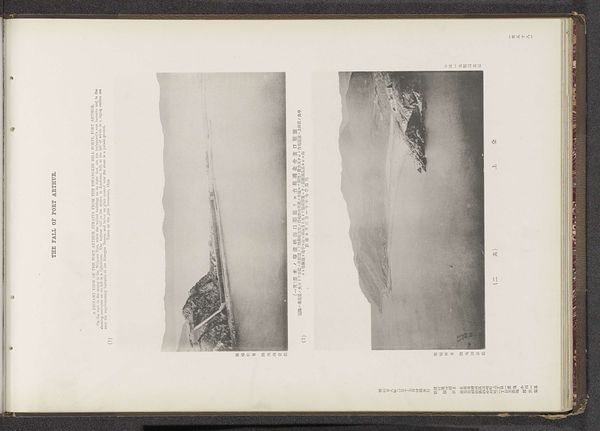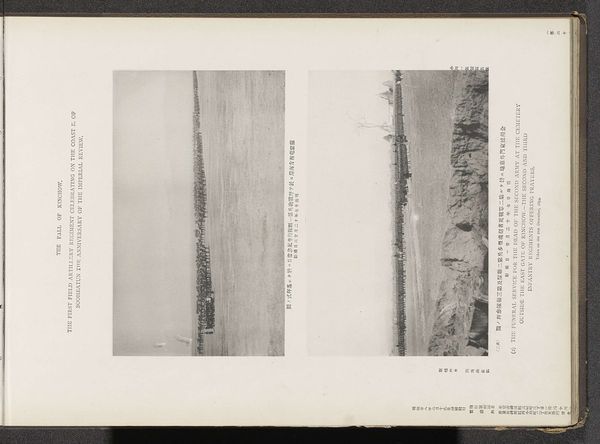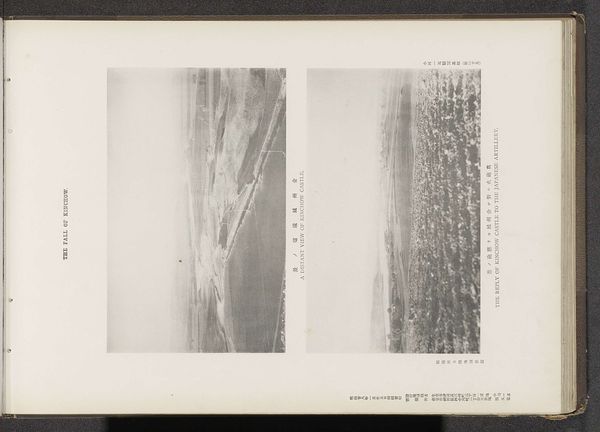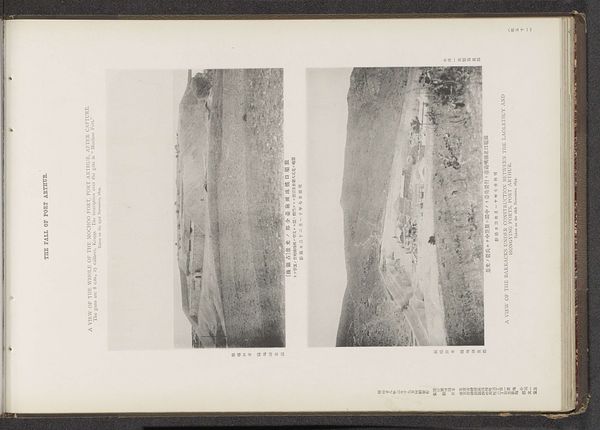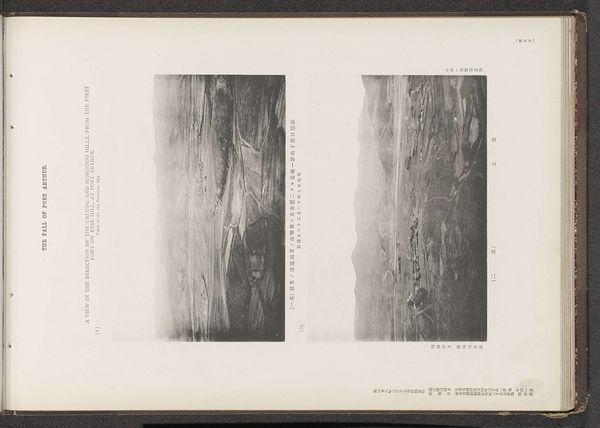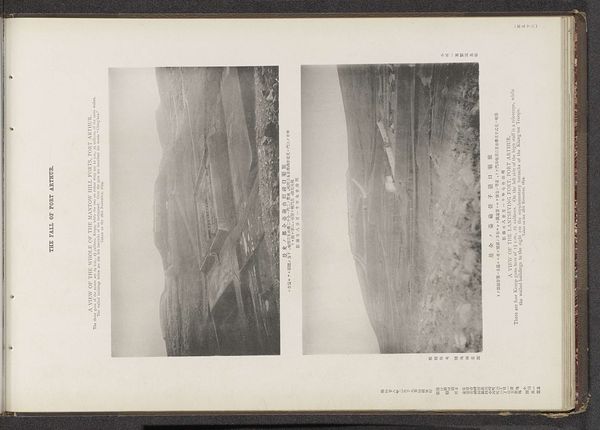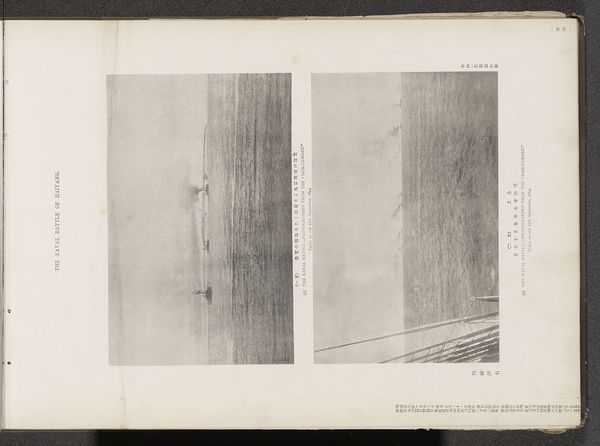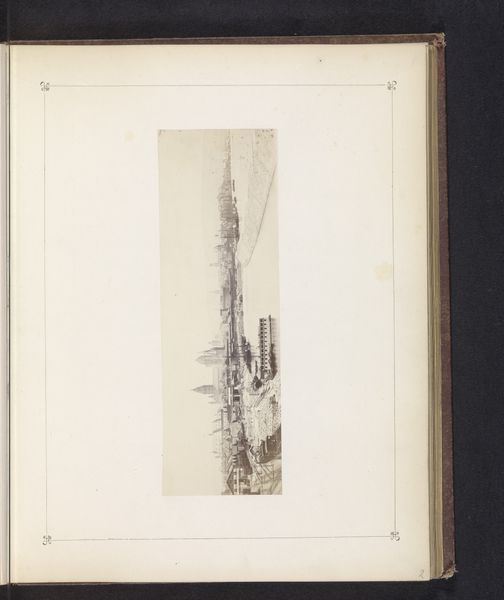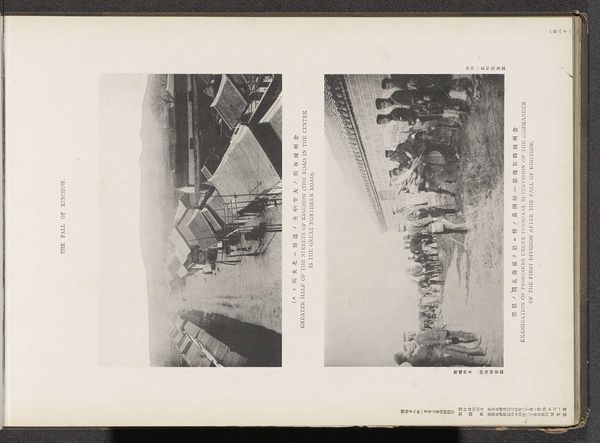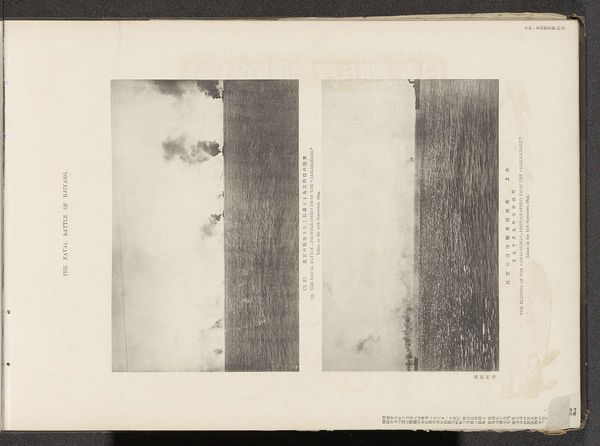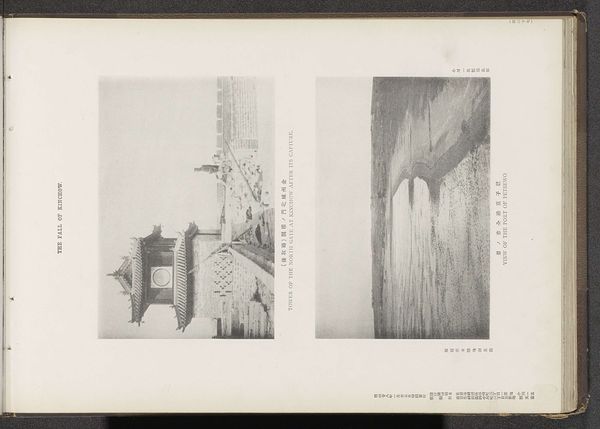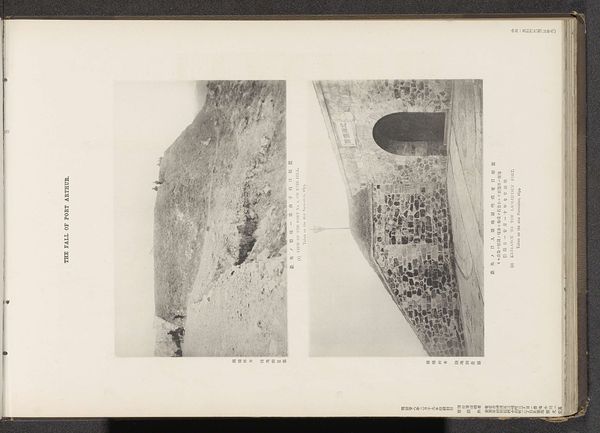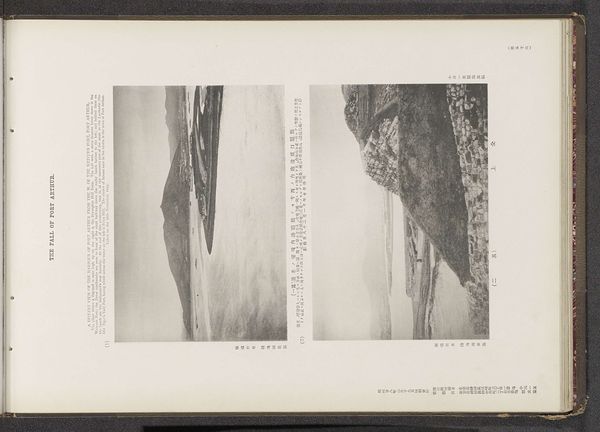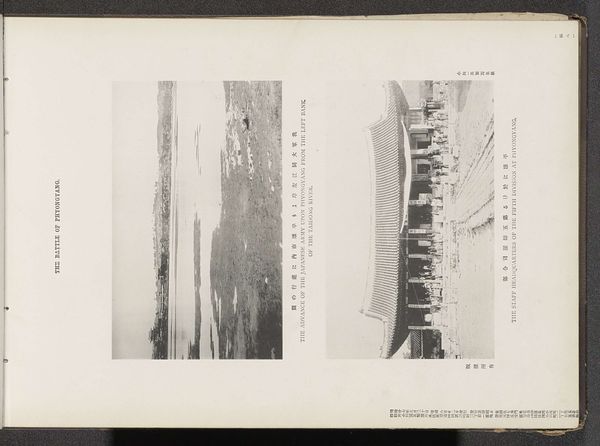
print, photography, gelatin-silver-print
# print
#
asian-art
#
war
#
landscape
#
photography
#
gelatin-silver-print
#
history-painting
Dimensions: height 426 mm, width 195 mm
Copyright: Rijks Museum: Open Domain
Curator: This photographic print, appearing in what seems to be a bound volume, depicts two separate scenes related to the attack on Chinchow. We know it was made before 1895 by the Ordnance Survey Office. It presents two gelatin-silver prints showing different aspects of a military offensive. What strikes you first about it? Editor: The overwhelming greyscale creates a feeling of starkness. The composition in both images appears fragmented, with no clear focal point beyond a general sense of conflict. I see textures ranging from what appears to be dense vegetation to sharp, angular man-made structures. It gives the overall feeling of disarray and mechanical breakdown during wartime. Curator: Let's start with the image on the left, titled in English as "The General Attack of the Infantry and Artillery from the North of Kinchow." The abstract patterns we see within are representations of troop formations positioned on a hill. What could this symbolize about warfare at this moment in time? Editor: Given the period, the symbol of military technology overcoming organic landscape feels quite palpable. If it's infantry on the left image, the image transforms them into faceless agents. Perhaps they're symbols for imperialism's reduction of soldiers to instruments of war, serving a system which reduces individual identities. Curator: The other image, entitled “The temporarily-constructed pier at the landing place at Peiteko" is strikingly horizontal, leading the eye toward the water. Notice how this horizontality juxtaposes sharply with the chaotic thrusts of the attack formation we were just examining. What reading could we draw here by comparing the contrast in shapes? Editor: I would infer from that contrasting set of geometric strategies that both images use shape to reflect specific ideologies. In one, we witness the unstable chaotic charge. While in the other image, the flat lines mirror the steady imposition of industrialized structure and power. Each uses pictorial form to convey a concept, wouldn't you agree? Curator: Certainly. The way light and shadow define the forms and evoke the solemn gravity, it's worth contemplating how these were crafted with specific intention to generate meanings and values. The details about the materiality and photographic processes add texture to our reading of warfare as something tactile, present, and ultimately felt through the senses. Editor: These images provide valuable insights into both the technology of warfare and the means of its symbolic representation at a crucial historical juncture.
Comments
No comments
Be the first to comment and join the conversation on the ultimate creative platform.
